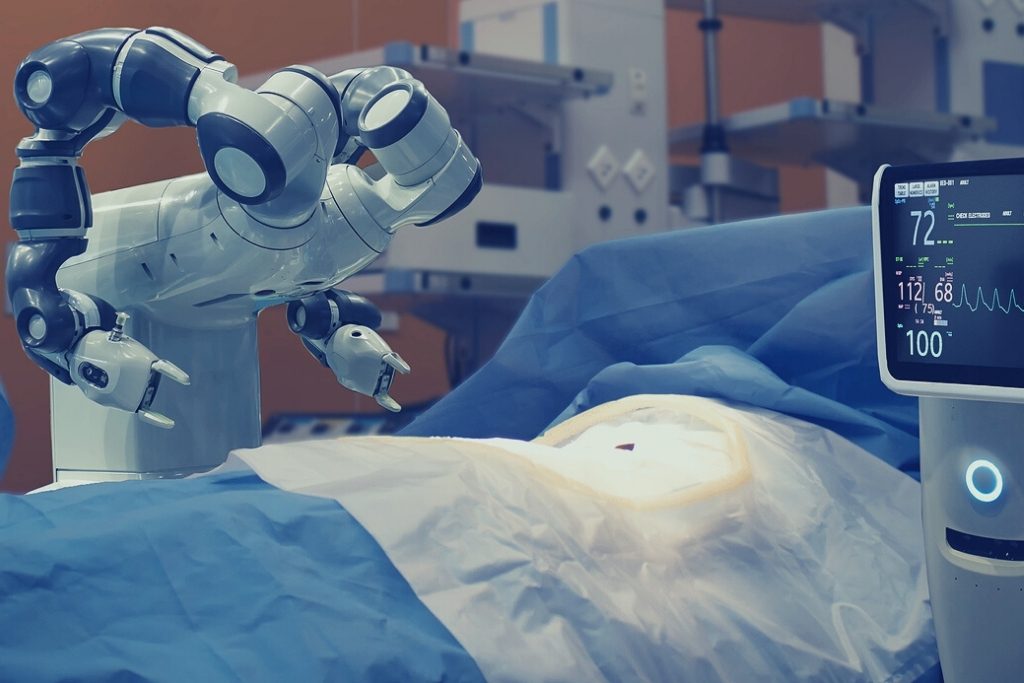Like many great inventions in history, modern robots first existed in science fiction literature before they materialized in the real world. The word “robot” was first coined by the Czech playwright Karl Capek in 1921, in his hit play, “Rossum’s Universal Robots”. It comes from the word “rabota”, which means “slave labor” in the Old Slavonic language.
First modern robots were developed in the second part of the 20th century, but people’s fascination with replacing human effort and automating tasks dates back to the Ancient World. In 1979, the Robot Institute of America described a robot officially: “a reprogrammable, multifunctional manipulator designed to move material, parts, tools, or specialized devices through various programmed motions for the performance of a variety of task”.
While they don’t always represent a human form, a robot is an automatically operating machine that can replace human effort.
COVID19 Pandemic is Fueling the Rise of Robots
Fast forward to 2021, and robots are already an indispensable part of daily life. From massive industrial robots that cultivate acres of land to micro-robots that assist doctors in surgeries, robotics technologies add value to human life in countless ways.
The global robotics technology market size is expected to soar to USD 189.36 billion by 2027, from USD 62.75 billion in 2019. There’s a reason why the multi-billion market will have more than tripled in less than a decade:
Robots work safer, faster, cheaper, making almost no mistakes, and using fewer resources.
As the robotics market keeps evolving, analysts believe that the demand for automation and robots might be gaining an additional impetus due to the COVID19 pandemic. Thanks to a widespread adaptation of robots in many industries like supply chain, manufacturing, construction, agriculture, retail, and healthcare, more humans can stay home, diverting more of their resources to high-value activities. In the meantime, robots can ensure the jobs get done without interruptions and reducing the risk of spreading any infection.
Robots Will Mean More Fulfilling Careers for Many

“Will robots take our jobs?” This is one of the most ubiquitous questions of our era, one that brings almost 60 million answers when typed on the search engine. It’s impossible to expect a paradigm shift as deep as automation not to move and shake many aspects of the global economy, creating some losers and winners. One may akin this to a needed transformative step ahead.
For instance, according to research by Oxford Economics, 20 million manufacturing jobs could be displaced by industrial robots by 2030, which translates to about 8.5 percent of the global manufacturing workforce. Likewise, driving for a living might be a moot occupation, as AI-powered transportation technologies might automate 89 percent of driving tasks within the next two decades.
That said, while automation and robots threaten some lines of work, there’s evidence that automation will grow overall employment and create more jobs than it takes. Since robots will automate much of the repetitive and administrative labor, workers will devote more of their time to creative and fulfilling tasks.
It’s always easier to imagine the jobs that exist today and might be destroyed than it is to imagine the jobs that don’t exist today and might be created.
Jed Kolko, Chief Economist at the employment website Indeed
Vint Cerf, the computer scientist widely known as one of the “fathers of the internet”, echoes this: “Historically, technology has created more jobs than it destroys and there is no reason to think otherwise in this case. Someone has to make and service all these advanced devices.”
Robots Can Help Us Fight the Climate Change
About 90 percent of the carbon emissions are defined as “manufacturing-adjacent”, which means they come from consumer use of powered and manufactured goods, such as electronics and vehicles. However, robots and automation have the potential to change this dire figure drastically. There’s evidence that a consumer economy powered by robots and automation can dramatically reduce greenhouse gas emissions while providing deep insight and data to mitigate climate change. In many industries, the use of robots forms a crucial part of a strategy to become sustainable.
The ecological contribution of robots way exceed their use in industries and the consumer economy: Robots can plant trees, harvest green energy, kill invasive species, clean rivers and oceans, help farmers survive droughts, and revolutionize the tricky business of recycling.
Robots Will Be Engines of Abundance and Prosperity

Robots are among our best bets, not just for mitigating climate change but also for sustainable development and a prosperous future. Many economists believe that robots will be among the key drivers of economic growth in the next few decades. Automation will add 5 percent, or USD 1.2 trillion, to the US economy alone during the next five years.
According to the Oxford Economics report, increasing robot installations to 30 percent above the baseline forecast by 2030 would lead to an estimated 5.3 percent boost in global GDP that year. “This equates to adding an extra $4.9 trillion per year to the global economy by 2030 (in today’s prices) — equivalent to an economy greater than the projected size of Germany’s,” the report said.
Robots Might Make Us Better Humans
Daniel Theobald, Founder and Chief Innovation Officer of Vecna Robotics, believes that robots will be central to the “prosperity chain”, which he describes as: “Humans create technology, technology creates prosperity, prosperity is shared, human society thrives and creates more technology.”
Theobald believes automation can unleash unprecedented levels of prosperity and kindness: “Having more means I am likely to share more. Having more also allows me to spend a greater percentage of my time on things other than meeting my basic needs.”
All in all, even though the very word “robot” stemmed from “forced labor”, the astonishing developments in robotics technologies might achieve the exact opposite. Robots might make us less robot-like. They can relieve humans from menial or dull work while empowering us to focus on creativity, service, and innovation — ultimately making us more human.





